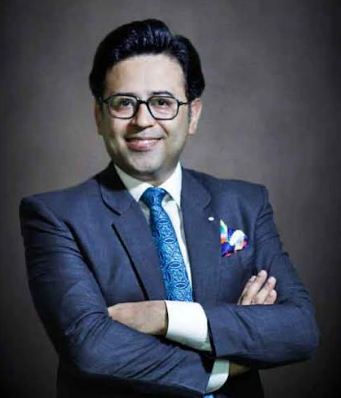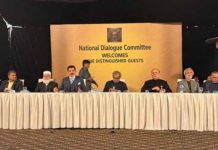Dr M Ali Hamza
In his tenure so far, Prime Minister of Pakistan has made around 29 foreign official trips to different countries for strengthening bilateral relations or to attend the conventions. These official trips include; 7 visits to Kingdom of Saudi Arabia, 3 to China, 4 to UAE, 2 to Malaysia,2 to Qatar, 2 to Iran, 2 to Switzerland comprising an attendance at 50th World Economic Forum, 2 to USA including a participation at 74th meeting of UNGA, 1 to Turkey, 1 visit to Kyrgyzstan to attend 2019 SCO Summit, and a visit to Sri Lanka, Bahrain and Uzbekistan. The outcome of such visits is normally a list of signed MOUs for mutual development or exchange programs. The end-up of such meet-ups is generally a set of promises for joint socio-economic or socio-political efforts. Besides MOUs, the recent two days visit of PM Imran Khan to Tashkent; Uzbekistancarries something exclusive. Exclusive is the statement of Prime Minister Imran Khan in a joint press conference with Uzbek President ShavkatMirziyoyev, that Pakistan and Uzbekistan will develop a film on the first Mughal emperor;Zaheerud din Babar. This is a unique announcement and thisproclamation refers to aconcept of media-matchmaking.
Media-matchmaking or media partnership serves to amplify viewpoints of two allied countries domestically and globally. The aim of media-matchmaking is to join skills and resources of partnering countries and ‘tell each other’s stories well’or work together to promote each other’s viewpoints, values, and interests. Strengthen the image of the partner domestically, and shape perceptions and public discourse around the world. Thus the partnering countriesmirror each other’s perspective.A guidebook on partnership published by Organization for Economic Co-operation and Development (OECD)mention in the partnership checklist that public relations activities and a clear external reporting system must be a vital part of partnership.
This practice is not new in building-up bilateral relations, but in times of high velocity information flow, the need has intensified. Last year on the sidelines of the Shanghai Cooperation Organization (SCO) meeting in Moscow, China’s and Russia’s foreign ministers called for strengthening bilateral media cooperation. Shortly after that, media representatives from both countries vowed to ‘report major international events in a comprehensive, impartial and objective way, and stay firm in opposing and resisting false information intended to stigmatize other countries especially in times of Covid-19. Since 2015, China and Russia have held an annual Media Forum and in 2018 both countries’ state-affiliated media agreed to increase publication of material approved by the partner’s government. As part of the broadening strategic partnership between China and Russia, media from both countries have signed numerous cooperation agreements over the past years: People’s Daily, Xinhua, Global Times and China Media Corporation have joined hands with RT, Russia Channel One, TASS and Sputnik on the Russian side. Both the countries realize that tobecome more powerful, they have to gain a stronger voice in international public opinion in order to challenge Western dominance over global values and governance. Another example is signing of a partnership and cooperation agreement between the UAE Al Ain News Corporation and the China Daily Group as well as a cooperation agreement with CCTV+, China’s first global video news agency. The signing of such agreements is focused to enhance the exchange of experience between the UAE and China in the media field, which will contribute to serving the common vision and the consolidation of UAE-China relations.
Country to country media-matchmaking is not only about collaboration of news agencies. It’s about mass communication through broadcasting, publishing online magazines, jointly making drama serials, composing songs together, creating joint Vlogs, establishing blogs for mutual interests, and definitely producing feature films. Pakistan lags behind in the said. Though we observe some joint media ventures between Pakistan and China and the exchange of personnel is witnessed. But was it a part of an institutional framework of comprehensive cooperation and strategic partnership between the two countries, drafted by Pakistan. Just imagine the unfathomable impact of having a media-matchmaking of Pakistan with China, Turkey, Uzbekistan, Qatar, and for future with Russia, Iran, ASEAN countries especially Indonesia and Malaysia. It will not only help in establishing soft image of Pakistan within partnering countries and among their public but will also construct more awareness among our own people regarding friendly partners.
Such media-matchmaking can take many forms. For instance reporters of two countries draft stories for the partner country,pool international resources by exchanging or drafting content together, developing apps and platforms for mutual benefits, air a series of news reports and documentaries that further party-state’s storylines, coverage of the constitutional, economic and social reforms by sticking to official descriptionof the partnering country, and conduct joint training and exchanges between key personnel who are meant to align narratives and present current events and viewpoints by traditional and new media. It’s the right time to craft an institutional level framework for media-matchmaking that should be implied to our new geo-economic and geo-political future bilateral relations. The framework should be inclusive of all available media resources, where Pakistan mirrorsthe perspective of partnering nation, and vice versa.
The writer is a columnist and broadcast journalist. He can be reached at [email protected]

















